Details of the
| 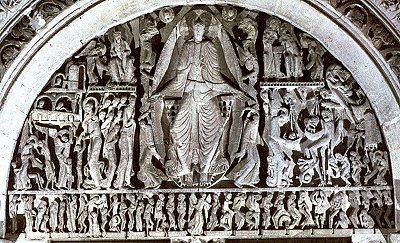 |
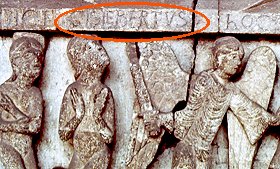
| Most medieval works are anonymous. With the exception of architects, most medieval artists were considered artisans or crafts persons. This tympanum is unique since we know the name of the sculptor --Gislebertus-- who "signed" his work with unusual medieval pride. (This pride in one's art will be common in the Renaissance.) | ||

|
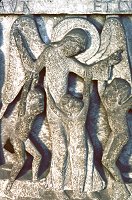
|

|
With a trumpet blast, the angels of the Last Judgment raise the dead, depicted as naked souls. The saved are conducted to Heaven by angels. A winged St. Michael, the archangel, holds a balance: in each scale pan is a human soul (a small naked figure). Typically, the righteous soul is the heavier. |

|

|
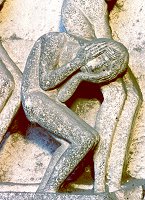
|
The damned, in despair, are carried off to hell by demons or pulled into the gaping mouth of hell. In medieval art the entrance to hell was often depicted as the jaws of a monster, derived from the sea monster Leviathan from the book of Job (ch. 41). |
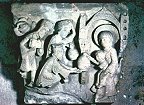
|

|

|
A sampling of historiated capitals: These tell the story of the visit of the Magi and the flight of the Holy Family into Egypt. |
All images marked MAS were photographed on location by Mary Ann Sullivan. All other images were scanned from other sources or downloaded from the World Wide Web; they are posted on this password-protected site for educational purposes, at Bluffton College only, under the "fair use" clause of U.S. copyright law.